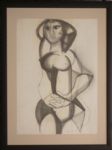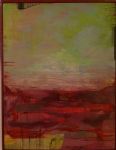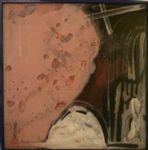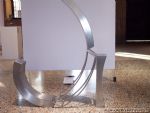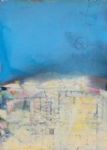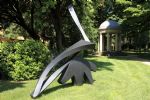CAPRICORNO GALLERY | ARTIST
Salvatore Garau Giovanni Frangi Luca Pignatelli Ercole Pignatelli Marisa Lambertini Velasco Ugo Riva Marco Petrus Soonja Han Flaminia Mantegazza Carlo Ramous Tommaso Cascella Heinrich Nicolaus Geraldina Garattoni Giovanni Calabrese Anna Maria Curto Federico Guida Daniele Peruzzi-fotografo Vittore Frattini Monica Marioni Maura Bruno Fiammetta Giuliani Michela Crisostomi DormiceCarlo Ramous
Carlo Ramous was born in Milan on June 2nd, 1926; sculptor, he studied at the High School of Art in Bologna and at the Accademia di Belle Arti di Brera. He was Marino Marini’s scholar, from whom he discovered his love for static and architectural forms. In 1946, he exhibited his first works of anthropomorphic shape, freely inspired by Boccioni, Fontana and Melotti. Soon he emerged on the scene of Italian abstract sculpture. His name appears over 300 times all over the world with solo exhibitions and major international exhibitions: at the Venice Biennale in 1958, 1962, 1972, at the S. Paulo’s Biennale in Brazil in 1961; at Rome’s Quadriennale in 1955, 1959.1973; at the Triennale in 1954 and in 1960, the International Biennale of Antwerp in 1965 and 1973. An important part of Ramous’ production are the urban sculptures, numerous worldwide. The constructive aptitude and the linear severity in the definition are immediately recognizable as typical elements of his plastic works; other two characteristics come to early specify his originality: the exploration, or more exactly the highlighting of materials, from wood to metals, as unavoidable components of any physical geometry. Plastic evidence and dynamic tension live together, each time experiencing a structural complexion that seems to defy rigidity, weight and inertia of materials. In the urban landscape of several European cities, Ramous’ sculptures are perceptive groundings with an immediate ability to deliver primary and recognizable symbols. They also measure the time. The changing of light each day and along the different seasons models peculiar evidences and suggestions. One need only recall the sculptures that have left an indelible trace in his hometown: the Finestra nel cielo (Window in the sky) in Piazza Miani (1968), Piazza della Conciliazione’s Gesto per la libertà (Gesture for Freedom) of 1972, the Monumento per i caduti dell’Isola (Monument to the Fallen of the island), in Via Sassetti (1972). In addition to monumental sculptures, Ramous prepares his research on several series of drawings. Less known but no less important is the painting by Ramous, in which he enriches with new elements his fervent, always innovative and international creativity. We can identify in it some sources, from the Informal movement, Impressionism, Symbolism. Ramous also often inserts metals, wood, textiles, maps in painting, managing to harmoniously combine painting and sculpture as rarely happens to other artists. Ramous died in Milan on November 16, 2003.

